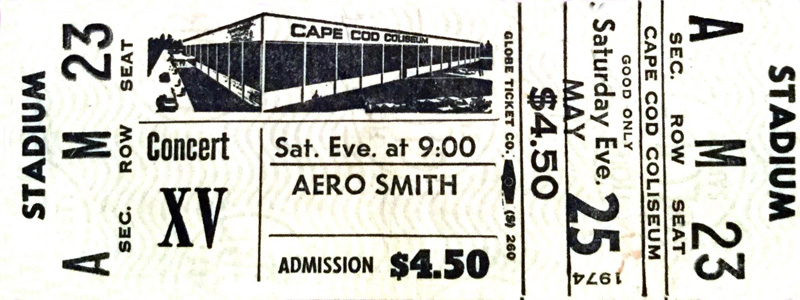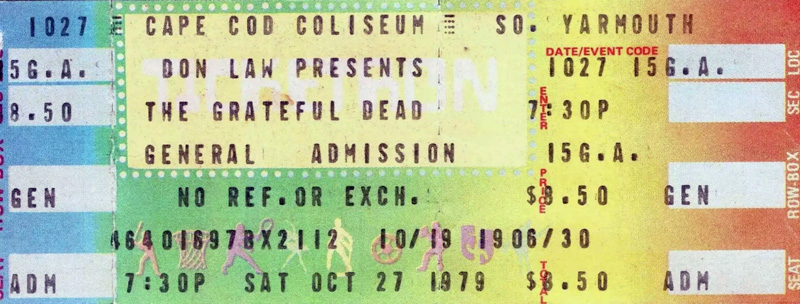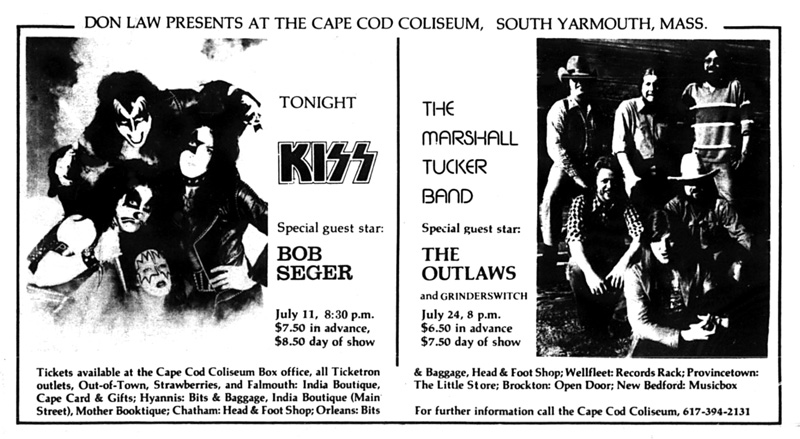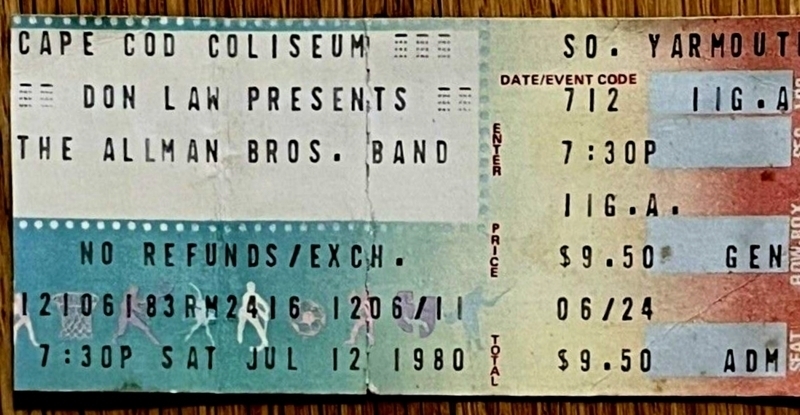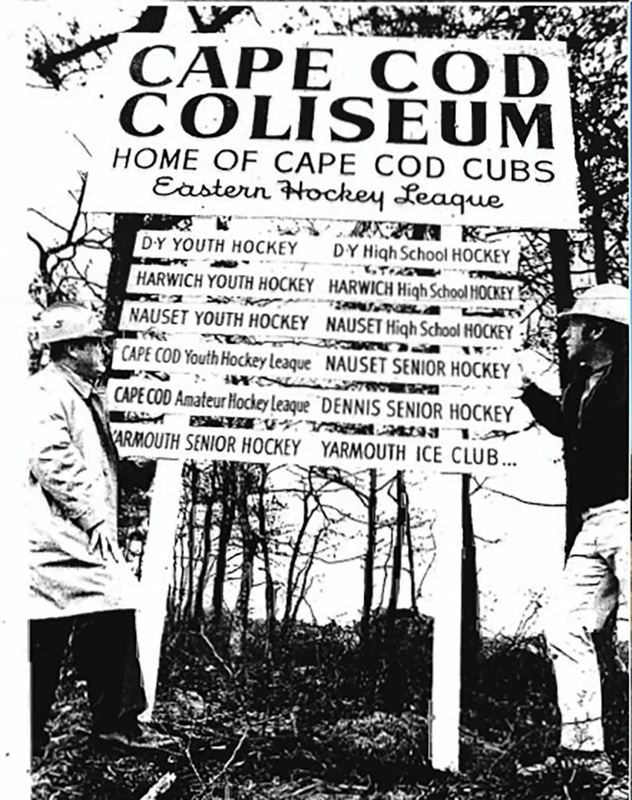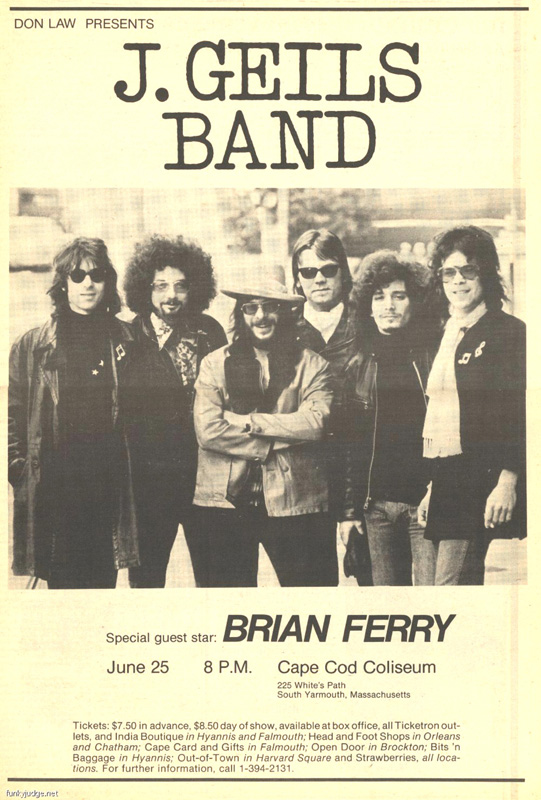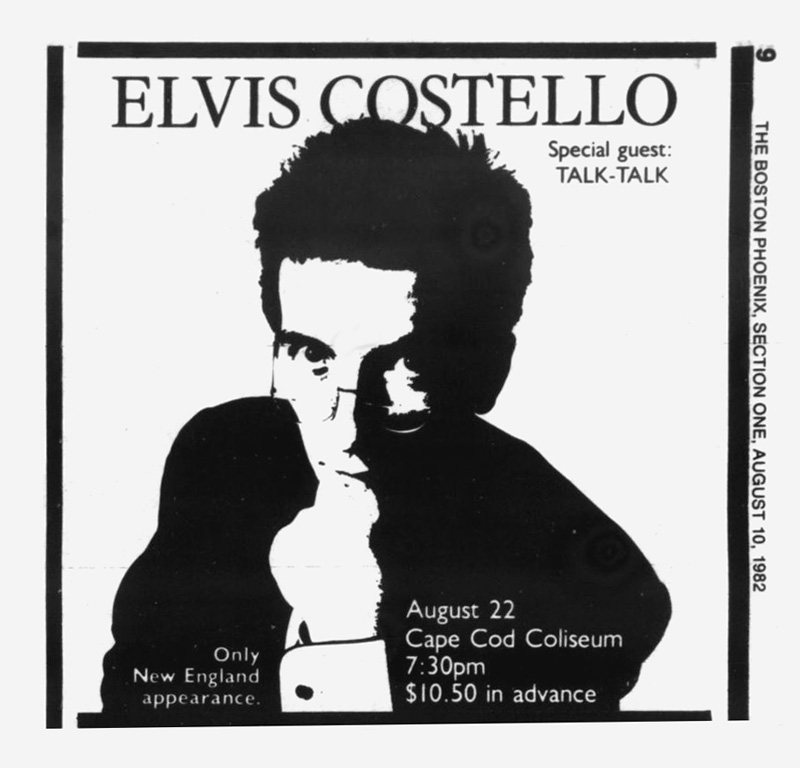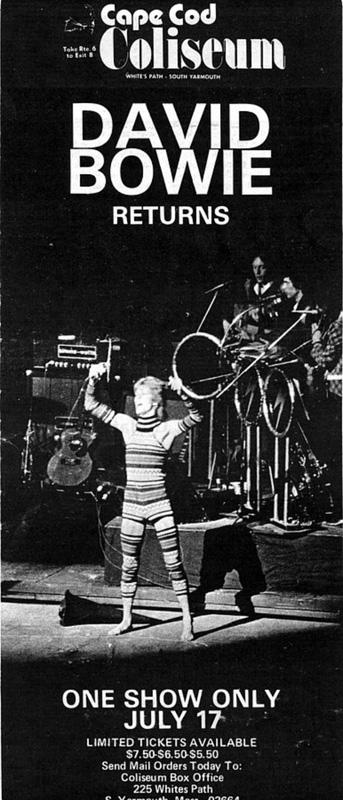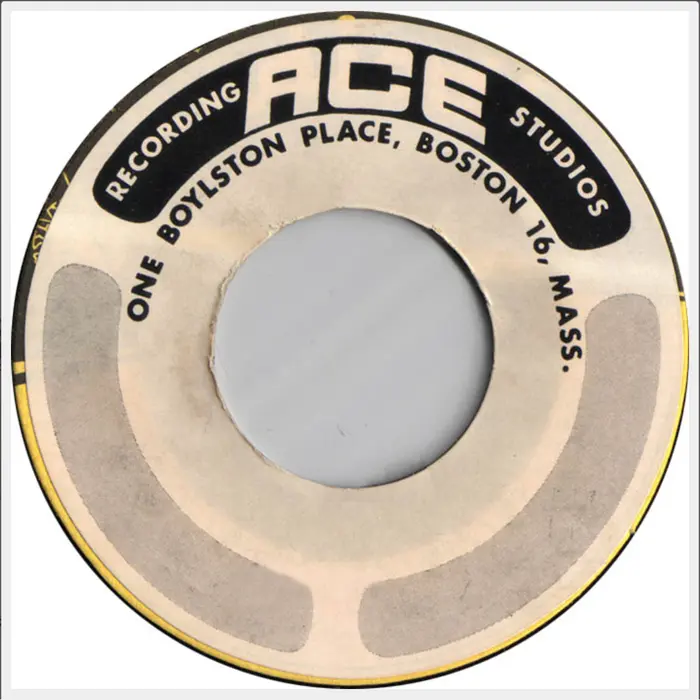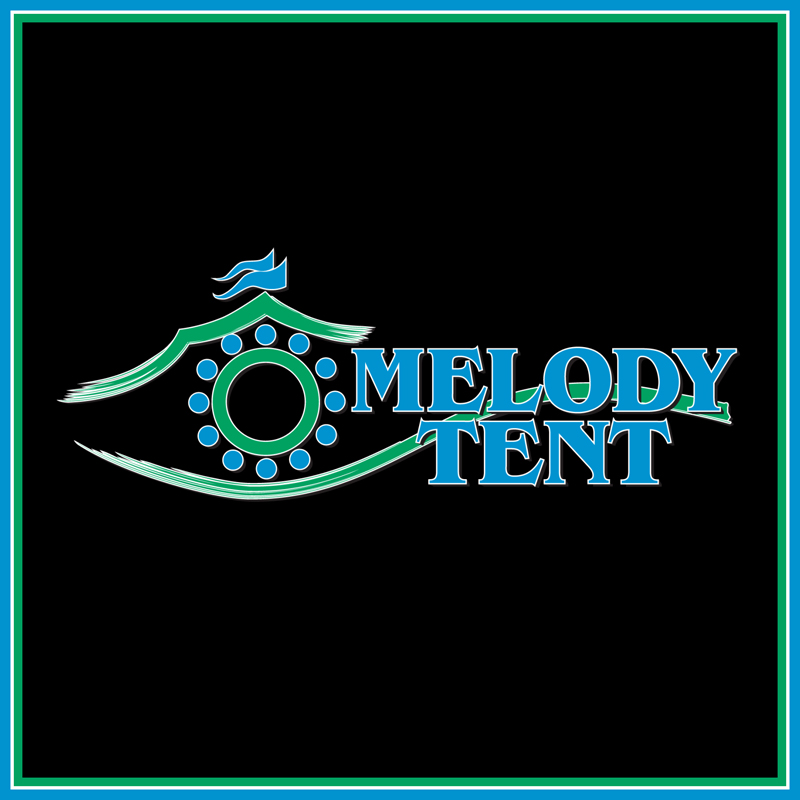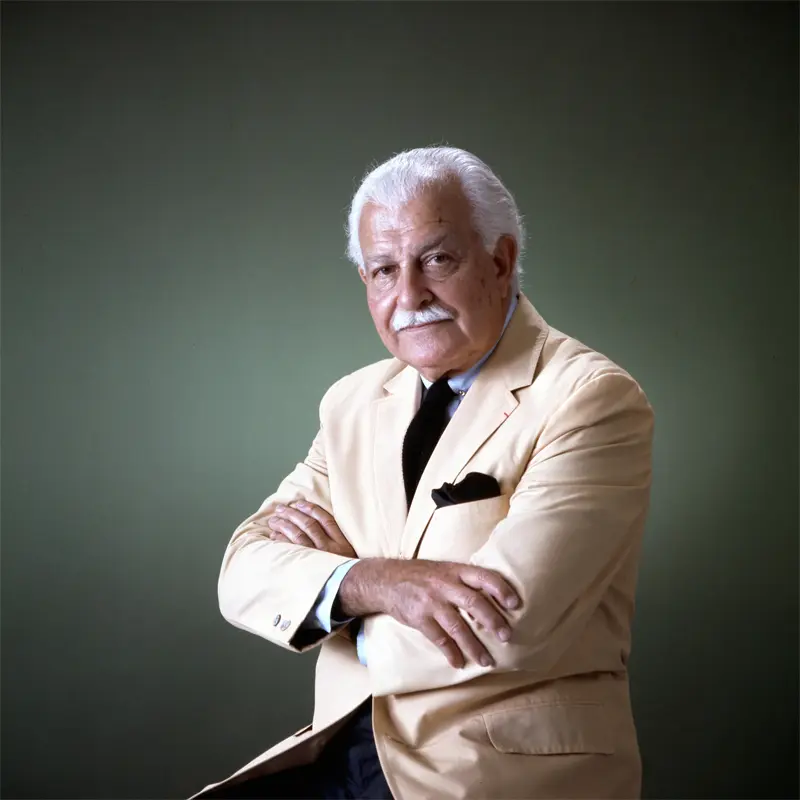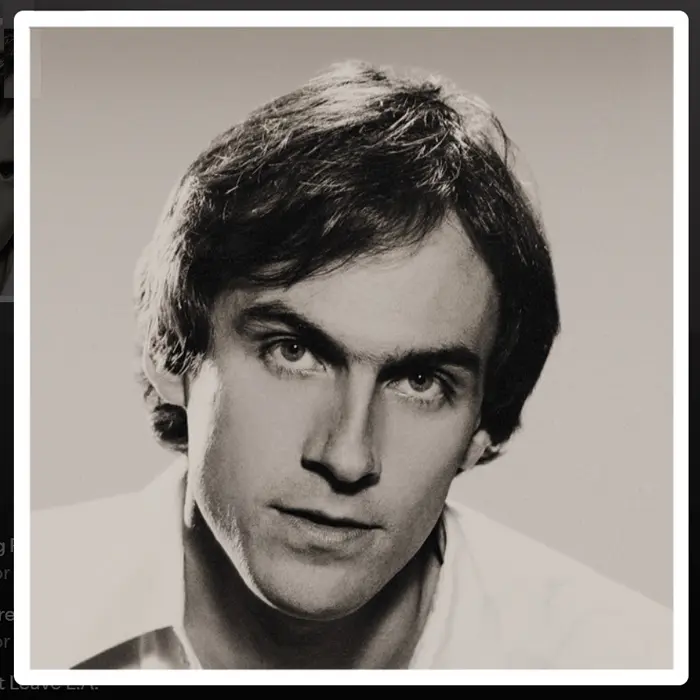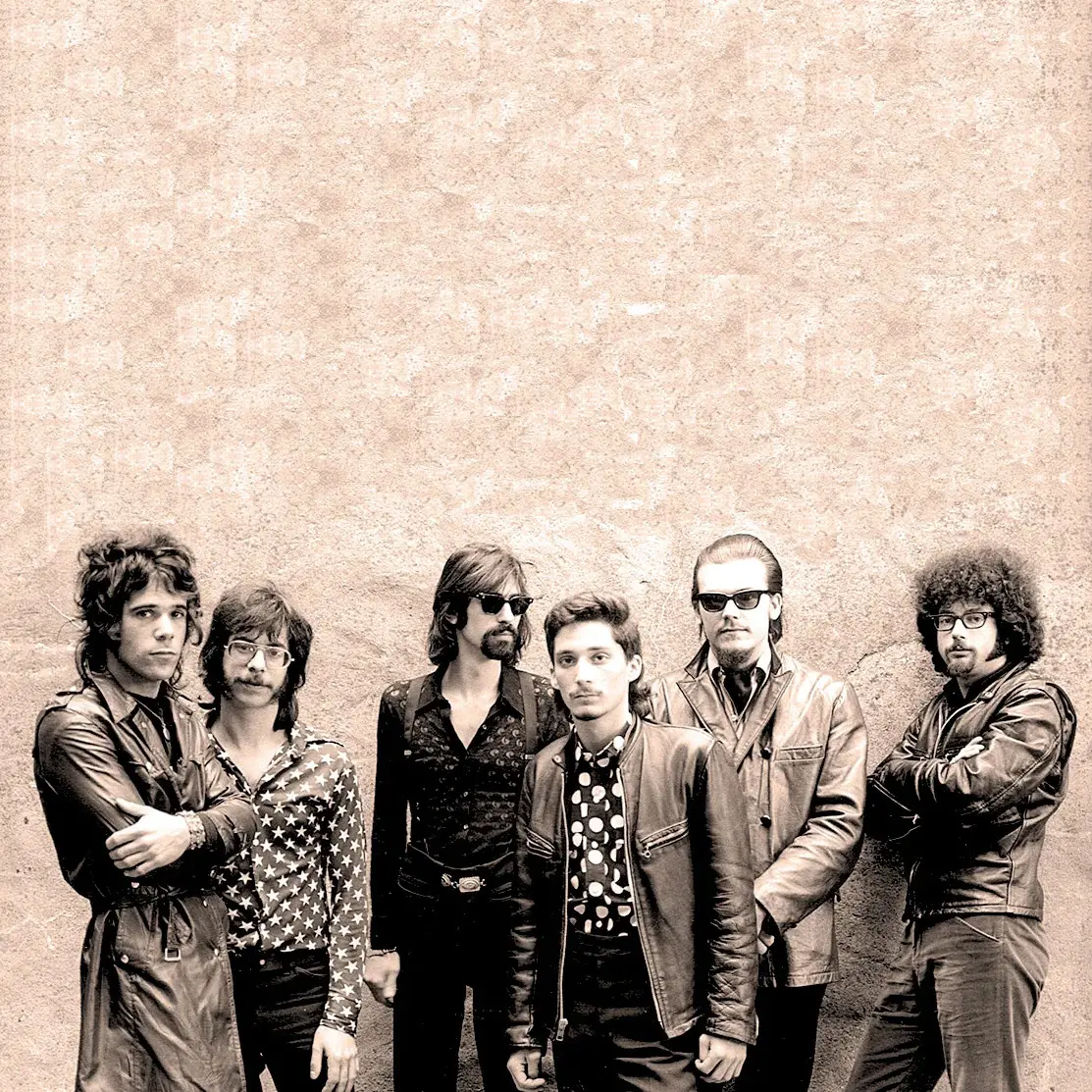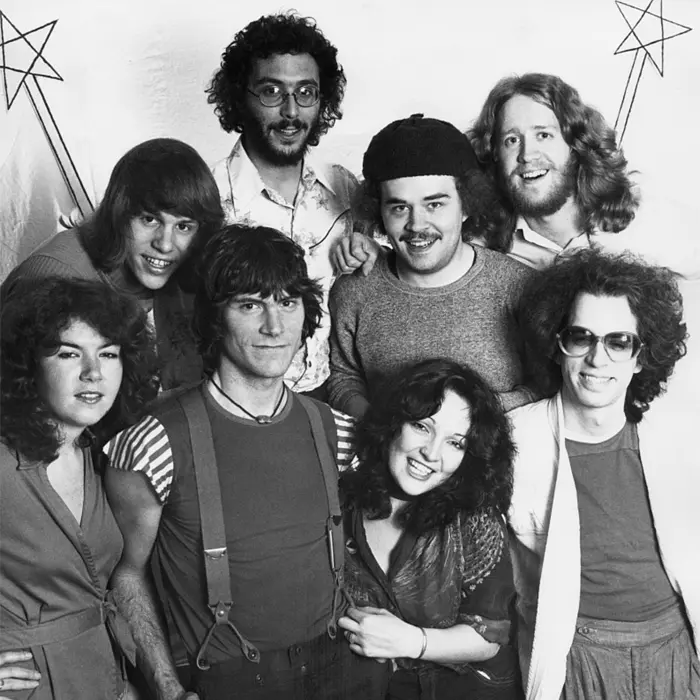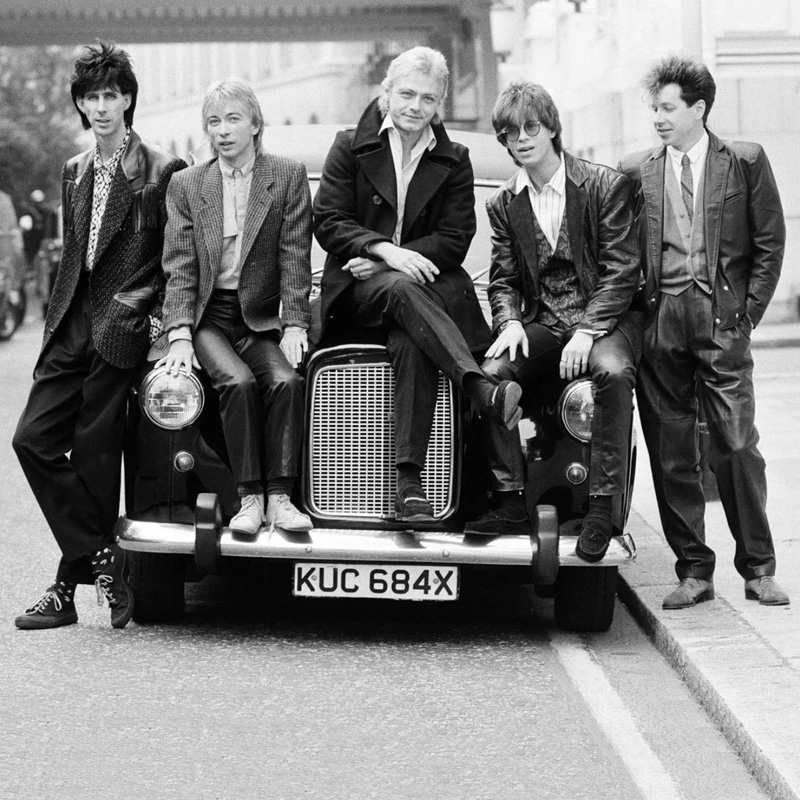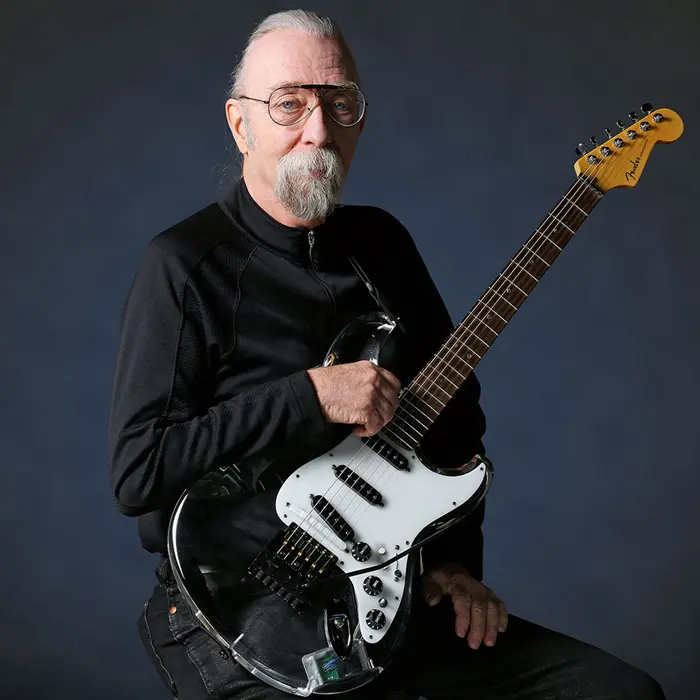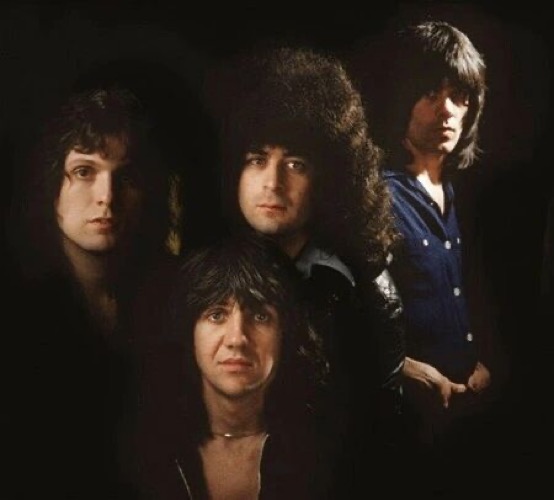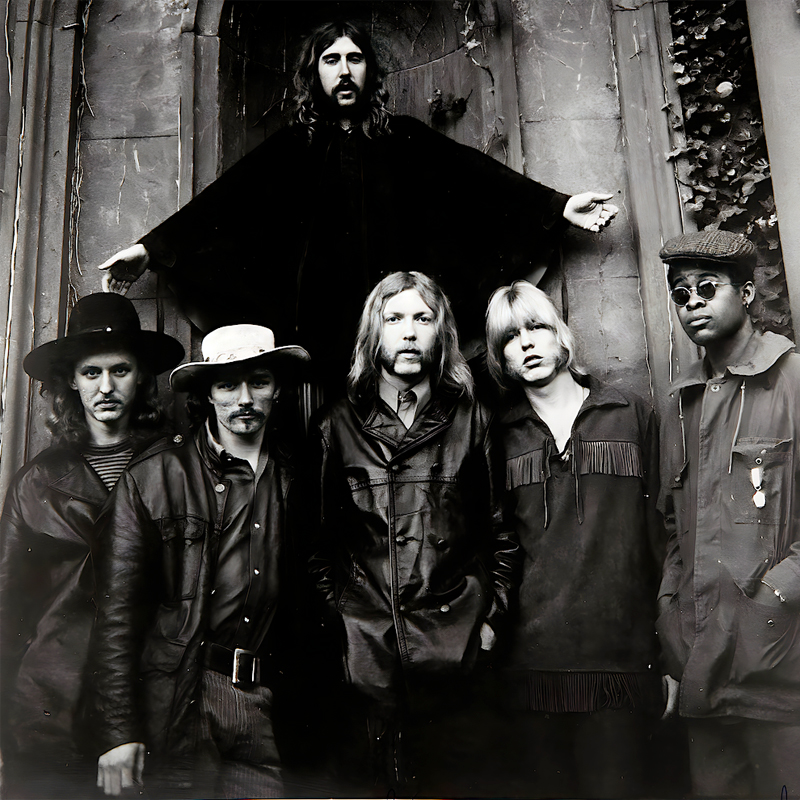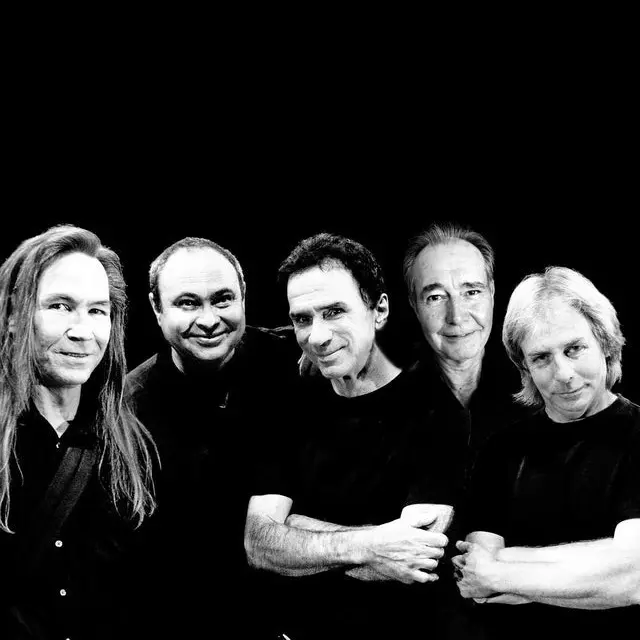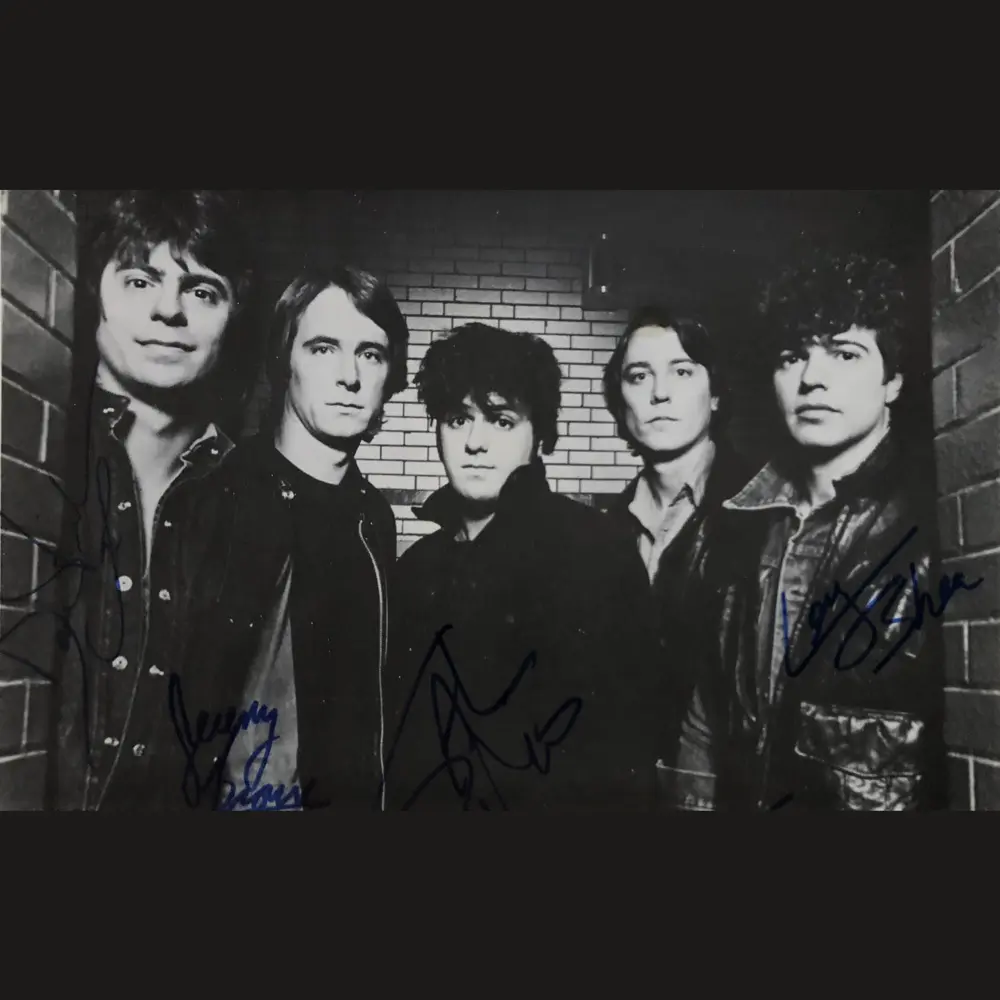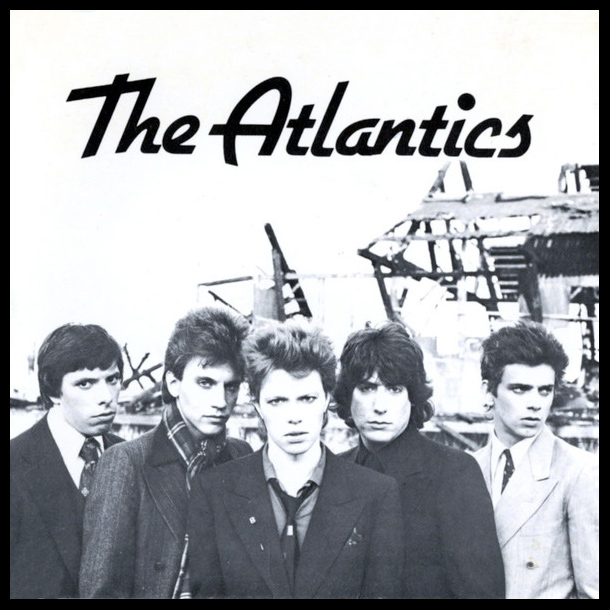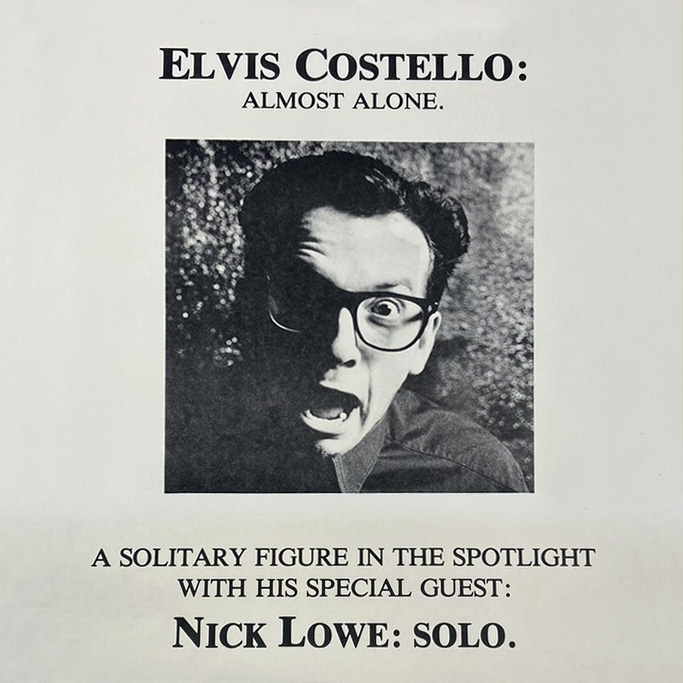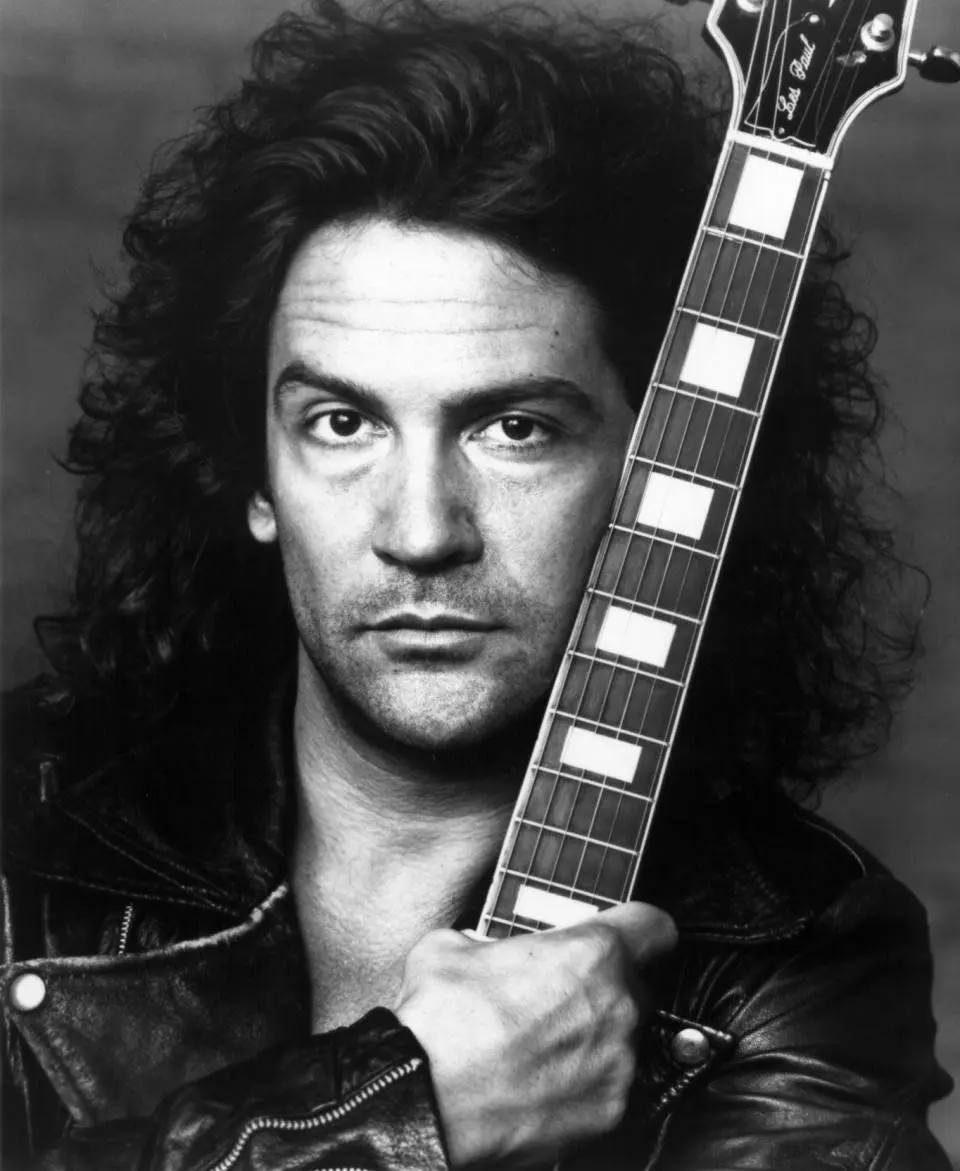Cape Cod Coliseum
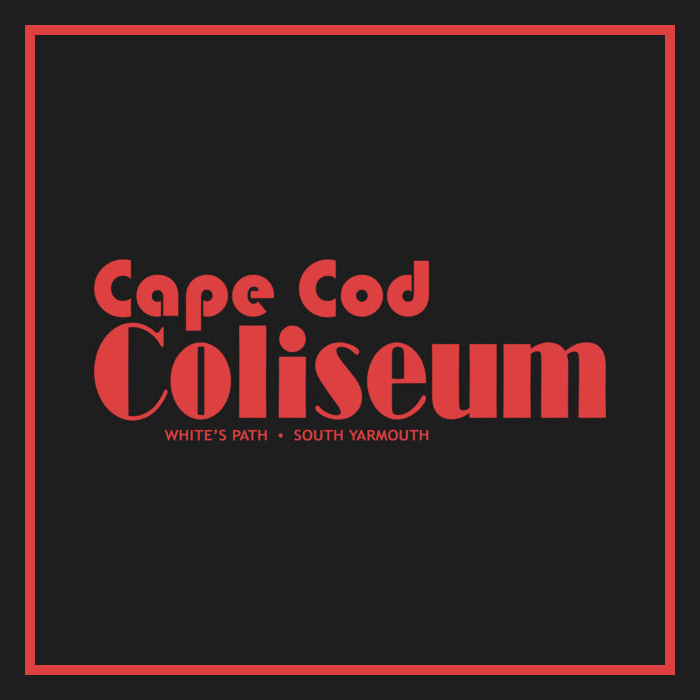
Most people associate Cape Cod with the serenity in the lyrics of its unofficial anthem, “Old Cape Cod,” cowritten by Ace Recording Studios founder Milton Yakus and popularized by Patti Page in 1957: “sand dunes and salty air, quaint little villages here and there, the taste of a lobster stew served by a window with an ocean view, winding roads that seem to beckon you, miles of green beneath the skies of blue.” But those of a certain age remember a place on the peninsula that offered nothing but noise, be it from slapshots, smackdowns or the sonic assault of classic rock and heavy metal: Cape Cod Coliseum, which hosted hockey, wrestling, roller derbies and dozens of defining musical acts, among them David Bowie, Santana, Black Sabbath, Earth, Wind & Fire, The Grateful Dead and Sly & The Family Stone.
From the early ‘70s until the mid-‘80s, the Coliseum served as an alternative to the Cape’s best-known live-music venue, Cape Cod Melody Tent, which opened in 1950. Direct competition between the two venues was limited, however, since the Tent and the Coliseum were different in practically every way, from capacity to program. The Tent is an open-air space with roughly a third of the Coliseum’s capacity (2,300 compared to 6,500) and presents acts from across the musical spectrum, whereas the Coliseum hosted mostly the top rock groups of the era. Basically, it served as the Cape’s “Mini Me” version of two arenas some 75 miles away, the 14,500-capacity Boston Garden and the 14,000-capacity Providence Civic Center.
The Cape’s year-round population was less than half of what it is today when the Coliseum opened (about 110,000 compared to 230,000), but its convenient location along Route 6 drew people from across the greater region. For many, the arena was a shelter from the storm in a troubled time, according to Cape Cod Times columnist James P. Freeman. “The Coliseum was a regional cultural sanctuary in South Yarmouth for the young Me Generation,” he wrote in 2019. “A refuge from the 1970s itself. Vietnam. Nixon. Watergate. Stagflation. Gas lines. Leisure suits. Three Mile Island. The Iranian Hostage Crisis. Bell-bottoms and belly-tops. Disco and discontent.”
OPENING, OWNERSHIP, MANAGEMENT, CAPE COD CUBS
Cape Cod Coliseum opened in September 1972, three months after the famed break-in at the Watergate Hotel, at 25 White’s Path in South Yarmouth. Built for $1.5 million (about $11.5 million in 2025), it was by far the biggest multipurpose facility on the Cape (and the fifth largest in New England at the time) and owner William Harrison and manager Richard “Bud” Terrio made every effort to keep the venue booked year-round, which turned out to be a monumental task. The pair needed an anchor tenant to provide a regular income stream, which Terrio accomplished by cofounding and becoming the first president of the Cape Cod Cubs, a hockey team that debuted in the Eastern Hockey League in the 1972/’73 season and used the Coliseum as its home ice.
Establishing the team made perfect sense because youth hockey had exploded across New England since the Boston Bruins won the Stanley Cup in 1970, led by their 22-year-old superstar Bobby Orr. Interestingly, the Hyannis Presidents team in the 1977 Hollywood movie Slap Shot was based on the Cubs and featured one of its actual players, Mark Bousquet. Though it’s a comedy, the film is considered to be an accurate portrayal of the ramshackle, extremely violent nature of minor-league hockey in the ‘70s.
DEBUT EVENT, NOTABLE 1970S APPEARANCES
The debut event at the Coliseum was a game between the American Hockey League’s Boston Braves and Rhode Island Reds on September 27, 1972. The venue started presenting musical acts April 1973; the first concert was by the Boston Pops Orchestra, conducted by Arthur Fielder, and was so highly anticipated that traffic was backed up from the Coliseum entrance to the Mid-Cape Highway’s offramps about a mile away. Among the shows on the roster that summer were ones by Chuck Berry, Ray Charles, The Beach Boys, Earth, Wind & Fire, John Lee Hooker, Blood, Sweat & Tears, Benny Goodman, Count Basie, Jim Croce, Herman’s Hermits and Helen Reddy (whose “I Am Woman” hit #1 in the Billboard Hot 100 in ’72). Aerosmith played their first show at the new venue in September ‘73.
In 1974, the Coliseum established itself as the rock mecca its remembered as being, eliminating all jazz and symphonic offerings and most acoustic artists, though chart-topping singer-songwriters and folk acts like James Taylor and Seals & Crofts appeared later in the decade. Among those who appeared that year were David Bowie, Three Dog Night, Golden Earring, King Crimson, Sly & The Family Stone, Blue Öyster Cult, 10cc and The J. Geils Band (who took the stage nine more times over the years, more than any other act). In ’75, ’76 and ‘77, acts included Billy Joel, Jeff Beck, Journey, ZZ Top, Peter Frampton, Lynyrd Skynyrd, The Kinks, KISS, Orchestra Luna and The Cars. One of the Coliseum’s busiest years was ’78, which featured The Doobie Brothers, Heart, Tom Petty & The Heartbreakers, Foreigner, Cheap Trick, Black Sabbath and The Pousette-Dart Band, to name a few, and ’79 saw appearances by The Grateful Dead and New England, among others.
According to Cape Cod resident Matt Reid, who went to many shows at the Coliseum during the ‘70s, the atmosphere at the venue was “laid back” and “no one got in trouble,” as he told Cape Cod Life’s Freeman in 2019, explaining that every concert was “like a mini Woodstock” with tailgating, an abundance of booze and the smell of weed emanating from station wagons and vans in the parking lot. The usual attire was jeans, bare feet and a t-shirt or bikini top, he said, noting that most homeowners in the area despised the concerts due to the resulting traffic and noise.
FINANCIAL TROUBLES, OWNERSHIP CHANGES, VINCE MCMAHON
Though the shows at the Coliseum were a success by any measure, the cost of keeping the venue afloat meant it had been on the brink of bankruptcy since opening. By 1974, just two years after their first season, the Cubs were drawing only between 2,000 and 2,800 fans per game – the arena held about 5,000 for hockey – and the Coliseum had become a huge financial burden on Harrison. In early ‘74, he put the building up for sale for $2.5 million but an agreement with Bass River Savings Bank allowed him to maintain the venue and the Cubs were renamed the Cape Codders.
Yarmouth native Edmund Fruean III bought the building in 1976 but the Cape Codders folded the very next year, leaving the financial situation more dire than ever. In desperate need of income from sources besides hockey and concerts, Fruean started presenting a mish-mash of events at the Coliseum, including roller derbies, basketball games featuring the Harlem Globetrotters, “Sesame Street Live On-Ice” and a visit from the Boston Lobsters, a tennis team led by Wimbledon champion Martina Navratilova and owned by future New England Patriots owner Robert Kraft.
The arena’s survival was made possible by North Carolinian Vince McMahon, a ring announcer for the World Wide Wrestling Federation (WWWF, owned by his father, wrestling promotor Vincent J. McMahon), who bought the Coliseum in 1979 and became its best-known owner. A bombastic character who combined ‘20s vaudeville kitsch with ‘70s programming style, he founded Titan Sports in South Yarmouth in 1980, purchased Capitol Sports (the parent company of the WWWF) from his father in ‘82 and rebranded it the World Wrestling Federation (WWF). From 1980 until ‘84, McMahon used the Coliseum for wrestling events that featured stars like Andre the Giant and Hulk Hogan.
NOTABLE 1980S APPEARANCES, CLOSING, LEGACY
Now financially stable for the first time in its eight-year history, the Coliseum started the ‘80s by bringing back popular acts while welcoming an impressive number of new ones including Santana, The Allman Brothers, Rush, Hall & Oates, John Mellencamp, The Fools and The Stompers. Among those that appeared in ‘81 and ’82 were Ozzy Osbourne, Def Leppard, Alice Cooper, Joan Jett, Billy Squier, The Clash, The Atlantics, Pat Benatar and Elvis Costello & The Attractions. The Coliseum’s final year hosting concerts was 1983, when acts included The Ramones, Talking Heads, INXS and Iron Maiden.
By 1984, McMahon’s wrestling empire had expanded dramatically across the US and was on the verge of becoming an international operation, meaning he no longer needed his own building to host regular events and lost interest in the Coliseum. The venue’s final event was a WWF one on June 4, 1984 featuring Sgt. Slaughter and The Iron Sheik, among others. That same year, McMahon sold the facility to Christmas Tree Shops, which used it as a warehouse before it was converted into the corporate offices of Dennis East International. These days, it’s used a distribution warehouse by several companies.
As for why the Coliseum didn’t last longer than a dozen years, many have said that losing the Cape Codders as its anchor tenant in ‘77 was the beginning of the end since it made the enormous operating costs impossible to manage for an extended time. Others have said that the Cape’s population was simply too small to support such a massive space, despite the fact that the number of year-round residents grew by nearly 50% during the time that the Coliseum was open. Cape Cod Life’s Freeman has noted yet another possible reason: a generational shift in attitude among young people. “Perhaps most importantly, pop culture also radically changed. The 1970s Me Generation of self-realization and narcissism later gave way to the 1980s Generation X of self-indulgence and materialism,” he wrote in 2019. “Ever so briefly, though, the Coliseum bridged those stark generational and cultural divides on Cape Cod. Like The Grateful Dead’s ‘Lost Sailor’ bridging broken dreams.”
(by D.S. Monahan)



